
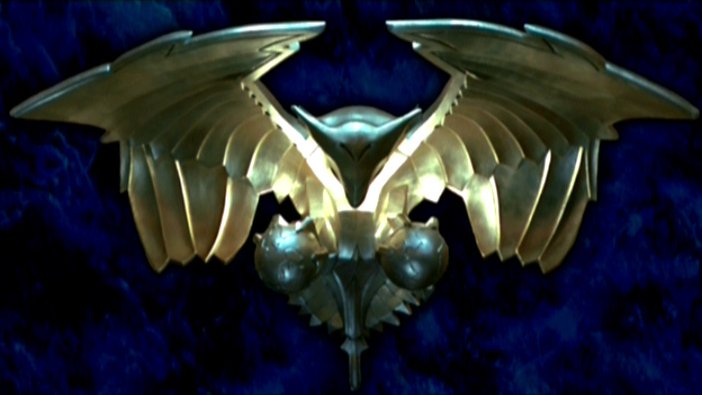
"You and I are of a kind. In a different reality I could have called you friend."
Romulan Commander, TOS: "Balance of Terror".
"These people are no one's enemy, Senator."
- Captain Jean-Luc Picard, TNG: "Unification part 2".
"One world's butcher is another world's hero. Perhaps I am neither one."
- Admiral Alidar Jarok, TNG: "The Defector".
"It would seem that we are not completely dissimilar after all; in our hopes, or in our fears."
"Yes…"
"Well then perhaps, one day…"
"…one day…"
- Romulan captain to Picard, TNG: "The Chase".
"People blame the military for the wars that we are asked to fight, but I think it is your kind, Major, that will be the death of us all."
- Commander Toreth, TNG: "Face of the Enemy".
"The Romulans are very moral, captain. They have an absolute certainty about what is right and what is wrong, who is a friend and who is an enemy, a strict moral compass which provides them with a clarity of purpose."
– DeSeve, TNG: "Face of the Enemy".
"My people have a reputation for arrogance. I'm afraid it's well earned."
- Kimara Cretak, DS9: "Image in the Sand".
"Romulans. They're so predictably treacherous!"
– Weyoun, DS9: "Image in the Sand".
"Romulans love secrets. They think everyone's hiding something."
"Everyone is hiding something. Whether they know it or not."
- Soji Asha and Narek, PIC: The Impossible Box.
"Is everything Romulans do a secret?"
"Ooh, I'm not at liberty to divulge that."
"Is your name actually Narek?"
"One of them."
"So is there anything you can tell me about yourself?"
"Yes. I'm a very... private person."
- Soji Asha and Narek, PIC: Maps and Legends.
"Paranoia is a way of life for you, isn't it?"
– The Doctor to Rekar, VOY: Message in a Bottle.
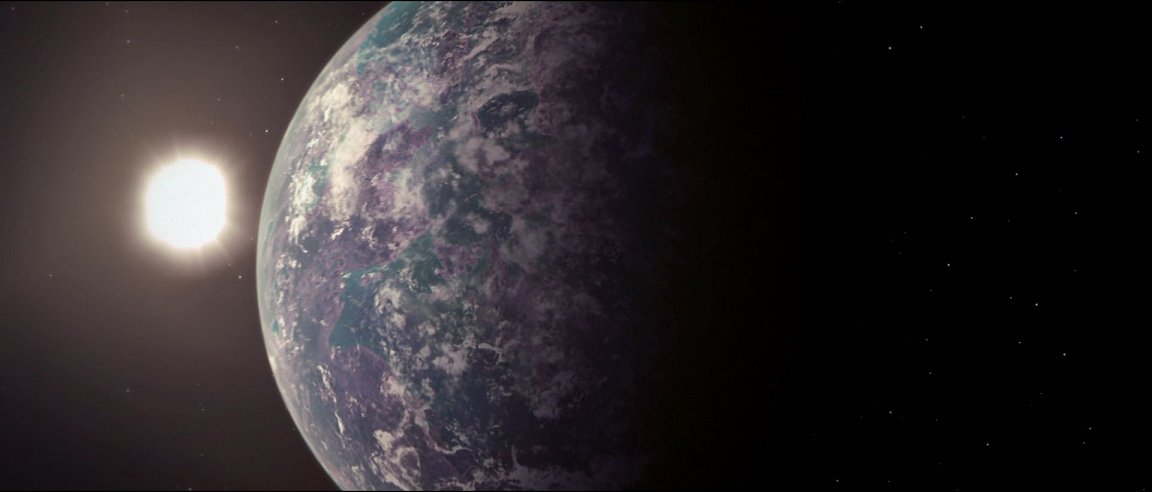
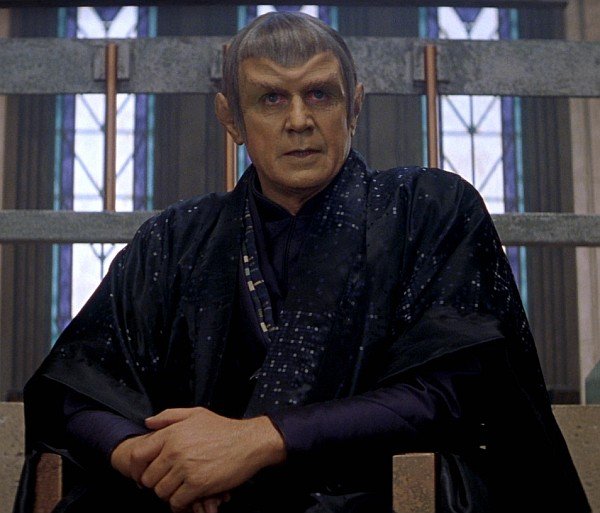 British Prime Minister Sir Winston Churchill once described Russia as “a riddle wrapped in a mystery inside an enigma.” The same can truly be said of the Romulan Star Empire and its peoples.
British Prime Minister Sir Winston Churchill once described Russia as “a riddle wrapped in a mystery inside an enigma.” The same can truly be said of the Romulan Star Empire and its peoples.
The Romulan people can be understood through their national game of "Alliances and Betrayal". The closest example on Earth is the game of "Go". It is a strategic gme with more than two players. A grandmaster can see hundreds or more moves ahead. Unlike Chess, there are no set directions and individual pieces. The variations are almost infinite. This game is their national game, it is also their way of seeing the universe and interacting in it. Always thousands of moves ahead. It is this mindset that gave the Romulan people concern when their souces on the old world of Vulcan alerted them to the approach of a new power in the Beta Quadrant: Earth. The Romulan people watched as the humans built up their territory with an ambition not seen since the Romulan people before them. The Romulans, through their allies on Vulcan, tried to hinder the development of the humans; the Romulans could see decades ahead and they could see the humans were coming. Their democracy and penchant for alliances meants that the humans would inevitably team up with their neighbours on Vulcan, Tellar and Andoria. Such an alliance would be dangerous to the Star Empire. The chance encounter of the NX-01 Enterprise and the cloaked minefield surrounding the frontier of the Romulan Star Empire in 2152 was the wake-up that the humans had arrived.
Author's Notes:
Star Trek has been guilty for decades of over-simplifying for television who the heroes and villains are. Clean-shaven Starfleet officers againt the dusky, bearded villain Klingons. The Romulan perspective is ideal for teaching IDIC (Infinite Diversity in Infinite Combinations) and tolerance for those whose ideas we don't share. For those who don't share our ideals and ideas either. True Star Trek. Seeing the Star Trek Universe through a different prism, building from TNG's best Romulan episode "Face of the Enemy". Even that episode title spoonfed the audience with the notion that the Romulans are our enemies. The concept of the Interim Years subseries of the "Nine Pillars of Romulus" has the unique selling point of telling the World perspective as seen from Russia, China, Iran or North Korea etc. They don't share Western liberal democratic values; they have DIFFERENT values that we must RESPECT, even if we don't agree with them. The Prime Directive protects civilisations that haven't attained warp drive, I believe General Order Two ought to protect cultures from contamination from our beliefs and to develop freely. Star Trek: Insurrection seemed to imply that this was all under the Prime Directive (the original subtitle of the movie). The Nine Pillars of Romulus will teach of the Federation value of respecting others. We don't fear those with other ideals and values; we respect them.
With this subseries I intend to do for the Romulans what the musical "Wicked" has done for the Witch of the West for the "Wizard of Oz" - turn everything on it's head. There's actual evidence for this: the Vulcans didn't mention that the Romulans were related for over 110 years from ENT: Minefield to TOS: Balance of Terror. Why? They had something to hide. The Romulans left Vulcan and stayed far away to build up a Star Empire and people worthy of the original values of Vulcan. Not Surakian logic. It is HUMAN expansionism that threatens the Romulans, just as it has the Klingons. All under the pretense of exploration and discovery. With no visible borders in space, you can't tell if you are invading the territory of another nation until you do. Slavery and classes in Romulan society are like castes in India; different, distasteful and unpalateable to us, but nevertheless THEIR ways and their values. The Federation doesn't condone regime-change. We take other people as they are; we don't force them to be like us. This is one of the many values that this series brings to the contemporary world. Unlike in Iraq, Afghanistan and the revolutions of the Arab Spring circa 2011 was the Western hopes that a Western-style democracy would emerge. Egypt, as an example, went through several leadership changes with the West wanting a government to emerge favourable to us. I want to show the Federation as culturally and socially enlightened; it embraces difference, it doesn't smother it and desire it to be like us. My touchstone is the Roman Empire. Having visited Rome in 2002 and again in 2019, Ostia and many villas, palaces and baths across the UK, this hopefully honours the original 1966 design that the Romulans are the Roman Empire that never fell.
The real-world analogs for the Romulan Star Empire are a mix of the Roman Empire, modern China, North Korea and East Germany. A mix of the honour and quest for territory of the Roman Empire, along with the secrecy, repression and surveillance state of specific communist countries. Michael Chabon, in ST: Picard season one, established a species with a secretive nature, with false doors and multiple personal names. It's been quite the challenge reconcilling this with the Roman image of robes, senates, Praetors and Centurions. Like the former East Germany, there's the Tal Shiar as the Stasi, with survellance systems, agents and informants. As per modern China, there is the Guoanbu state security service, re-education centres and gulags like in Xin Jiang with the Uighur people. The Japanese Kempeitai secret police, German SS and Gestapo and North Korean state secutrity also are analogs for the cruel efficient manner of the Tal Shiar. Truly nasty. Secrecy is a tool used by both the royal family, high-born Romulans, senators and the low-born plebes to protect themselves. Senators and high-born do it to protect their status and secret plots, the low-born to protect themselves from all those above them with power; especially the Tal Shiar and their informants. Even the home and the bed aren't refuges from the Tal Shiar. The Romulan Palatine Palace has an extended family of those scheming to rise to the top. This is like the Forbidden City in China, mixed with the Palatine Palace in Rome: a vast town-sized palace protected by Palatine guards, full of lower ranked royal Romulans scheming and the top ones trying to protect their position (and themselves) from assassination. Like in North Korea, only "The Admitted" are even allowed in this Forbidden City. A protective measure, as well as one to control access to those at the top of the pyamid of power. Although, it can be argued the Praetorian Guards have the power of selecting those who have access or not.
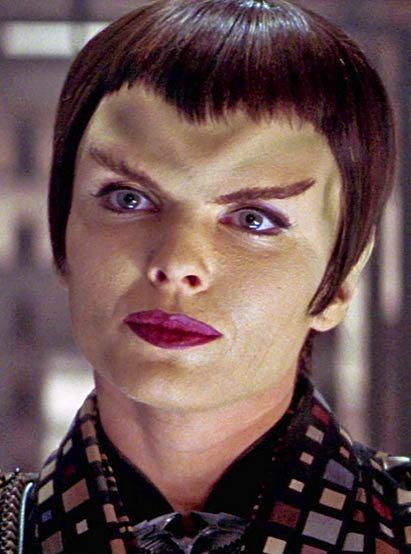
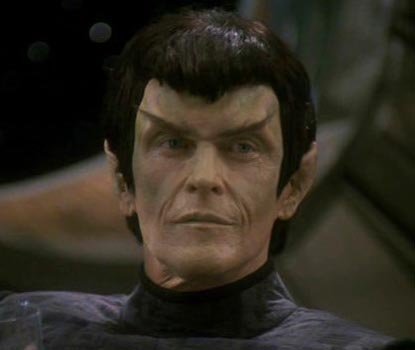 Romulans
Romulans
Romulans are the cousins to the Vulcans. They left Vulcan around 2000 years ago and found a new home world deep in the Beta Quadrant that they christened Romulus. The small number of refugees meant that there was a small starting genepool. The different ships had different Romulans from around Vulcan, each with their own racial traits. The militant philosophy of the Romulans, forged in part from their long voyage, found full expression on this new planet. In a natural harbour near the edge of swampy woodlands the Romulans built their capital city.
Romulans in the North of Romulus have a more developed ridged forehead; Southern Romulans have a smooth forehead tha is indistinguishable from Vulcans. Northerners are stereotyped by other Romulans as stubborn. Author's Note: Established in canon by Laris in Star Trek: Picard "The End is the Beginning". Romulans practice the Zhal Makh, a traditional form of meditation considered taboo to non-Romulans.
The Romulan Star Empire is more advanced than the Klingon Empire and perhaps even the Federation. With Vulcanoid brains and an ethical outlook favourable to technical progress at any cost. Romulans favour modernist minimalism in both their technology and aesthetics. They aren't sentimental for ancient structures or heritage, more for the progression of the Star Empire to it's place in the universe. The Romulans settled far away from their Vulcan cousins in order to grow their Star Empire without interruption.
The Romulan Star Empire has nine pillars of power: the The Emperor (and Empress), Praetor, the Senate, the Continuing Committee (ie the Romulan governing Party), the Tal Shiar, the Department of Education, the Military, the Qowat Milat and the Praetorian Guard. Each of the pillars keeps the other in check. The Praetor Domitius (2280s - 2311), cleverly uses the Tal Shiar and Praetorian Guard to intimidate the Senate, Continuing Committee and military into doing his bidding. They view the world like their national game of Alliances and Betrayal. They look at the universe as the Long Game. In terms of decades and centuries, not months or years. The minefield, prawn holoship and war with the Coalition of Planets 2156 - 2160 was an attempt to prevent the Earth Starfleet forming an alliance with the Vulcans, Andorians, Tellarites and Rigelians; the Romulans foresaw this all and tried to prevent it. They knew their Vulcan cousins were a threat and that this would lead to a Federation of over 100 worlds within a century.
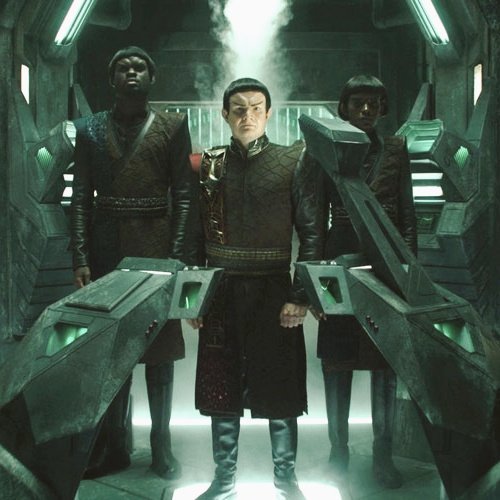
Author notes:
Plot holes, big wide and plentiful.
First issue: Romulans, up to 'Balance of Terror' are not supposed to have warp drive. Truth is it would take HUNDREDS of years at sublight to get from Vulcan to Romulus. Then in the Coalition of Planets-Romulan War (2156 - 2160) the Coalition ships had warp drive (warp 5 for Earth and warp SEVEN or Vulcan ships, which would make the Romulan ships look static and stupid. 1966 knowledge gave us the Romulans (before we'd set foot on the Moon or sent space probes to the other planets in the Seventies onwards. With 2017 knowledge, I'd argue the Romulans must have had COMPARABLE warp technology to the Vulcans and MUST have had warp drive to get to Romulus (landing after hundreds of years just to turn around and spend hundreds more rushing to start a war against the Coalition of Planets on your distant border, is just plain silly).
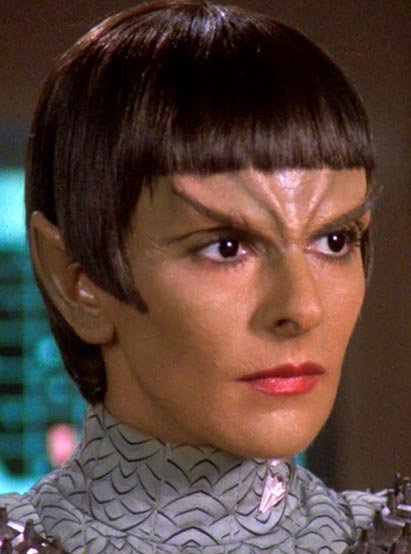 So the Romulans had and have warp drive. The next point is these exiles from Vulcan needed ships to get to Romulus. Where did these warp-powered colony ships come from and how many would fit on these ships? Thousands, possibly a few million seems a sensible figure, with some lost on the way from going different paths or being lost to Space Perils © (TM)... So a few million Romulans start off their planet colony a few months or years of exploration after exile by Surak. That gives time to grow your Star Empire and have ships ready to fight the Coalition of Planets in 2155 (and sneak Romulan operatives to Vulcan some years before this). Romulan ships armed with nuclear missiles? Again, a 1966 idea which seems silly given NX-01 Enterprise had proto-photon torpedoes and phasers by 2154.
So the Romulans had and have warp drive. The next point is these exiles from Vulcan needed ships to get to Romulus. Where did these warp-powered colony ships come from and how many would fit on these ships? Thousands, possibly a few million seems a sensible figure, with some lost on the way from going different paths or being lost to Space Perils © (TM)... So a few million Romulans start off their planet colony a few months or years of exploration after exile by Surak. That gives time to grow your Star Empire and have ships ready to fight the Coalition of Planets in 2155 (and sneak Romulan operatives to Vulcan some years before this). Romulan ships armed with nuclear missiles? Again, a 1966 idea which seems silly given NX-01 Enterprise had proto-photon torpedoes and phasers by 2154.
It's these nine pillars of power that I wish to explore with the Romulan perspective entry in my Interim Years universe Star Trek model. The careful dance between the Emperor (and Empress), Praetor, Senate, Continuing Committee (ie the Romulan political party), Tal Shiar, Department of Education (ie propaganda), Military, Qowat Milat and Praetorian Guard. Each of them balancing the others. In theory. It covers the Interim Years period 2280s through to 2310s. The Praetor Domitius with a darker-Magneto-type Sir Ian McKellen in the role, a Ciaran Hinds-as-General Julius Caesar as a veteran general character whose career dates back to around the first Coalition of Planets war. An Anthony Hopkins-as-Dorctor Ford from Westworld-type character as the chief researcher in the Vault. His power lies with the alien technology (including abandoned El Aurian refuee ships) that he's reverse-engineering and cutting edge developments he has access to. A Ray Stevenson-as-Titus Pullo-from-Rome as Omex. Veteran warrior, spy, assassin whose retirement on Nimbus III just isn't working out.
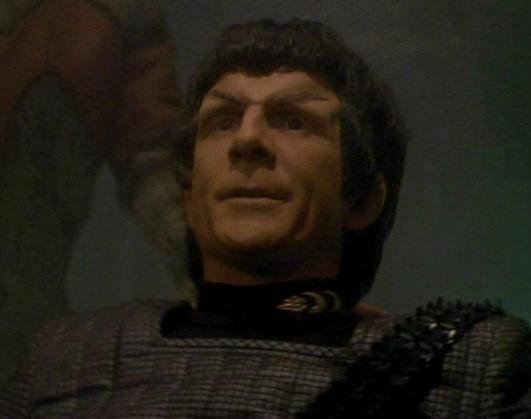 Over the following millennia or so the Romulans forged their culture and attained their unique look. The small genepool meant that recessive genes found expression, such as the forehead ridge found in ancient proto-Vulcan species. As the Romulans left Vulcan before the philosophies of Surak became the culture, they never realised their psionic abilities. (Author note: although the backstory for Nero shows he did achieve this through drugs and imprisonment. So Romulans DO have the potential).
Over the following millennia or so the Romulans forged their culture and attained their unique look. The small genepool meant that recessive genes found expression, such as the forehead ridge found in ancient proto-Vulcan species. As the Romulans left Vulcan before the philosophies of Surak became the culture, they never realised their psionic abilities. (Author note: although the backstory for Nero shows he did achieve this through drugs and imprisonment. So Romulans DO have the potential).
The Romulans do not have the emotional restraint that the Vulcans have, very much in the spirit of the ancient warring Vulcans of 2000 years ago. The Romulans do, however, have great mental control. They are able to prevent others reading their mind. This focus allows Romulans to concentrate on tasks far better than most; this helped grow their new homeworlds and Star Empire. The Romulans needed to increase their population rapidly, given only a few thousand refugees arrived, to populate their planet. The Romulans discovered the native Reman race on their twin planet of Remus, soon enslaved to mine dilithium to fuel the construction of their Empire.
Author Notes: The population would have to increase rapidly to create the Romulan Star Empire. The Remans would be enslaved first. Two thousand years to reach Romulus, populate the planet to 5 billion or so and expand to other worlds. To include black, Asian and other ethnicities, the different refugee ships had different Romulans from around Vulcan. Why attack the Federation? A massive plot hole really...
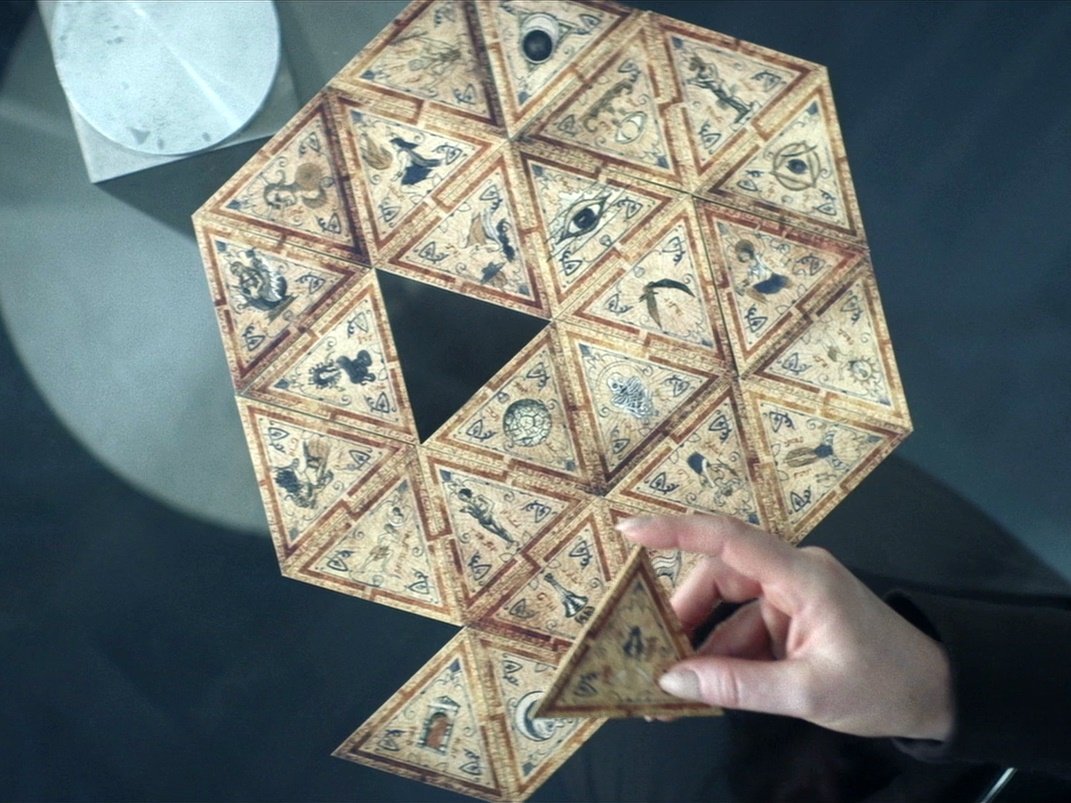
The strategic minds of the Romulan Senate worked ahead that the Coalition, that was inevitable, was to be killed before it could be born. Either deal with this fledgling thought now or suffer the consequences in a century. In 100 years, such an alliance will grow to encompass dozens of species and worlds. Such a coalition of barbarians should be snuffed out. Discreetly. A prawn holoship was devised, using an Aenar subject to control it from a vast distance, to fool the potential allies into fighting each other. The fears and old treacheries of these people would destroy them. In the event, the plan failed and the Coalition of Planets was born. The Romulan Senate knew that the options were growing limited. War was inevitable as even the agents on Vulcan could no longer contain the humans. Four years of conflict later, the war was convincingly lost to the Coalition of Planets and the worst fears of the Romulan Senate were realised. The United Federation of Planets was born and the arrival of a strategic rival on the Western Front was confirmed. Interestingly, the Vulcans never revealed to the Humans who the Romulans are. Something that would be kept secret for over 110 years.
The Romulan people can be traced back to a diaspora of Vulcans who sought to stay true to their nature, as servants of Nature and rejecting the pacifism of Surakism; they wanted to use their superior technology and wisdom to conquer the stars. They walked under the banner of the Raptor and fought a nuclear war against Surak and his pacifists. The servants of Surak were too strong and the Romulans withdrew in disgust to the stars, a far distance to maintain the true ways of the Vulcan people. Untainted. Many ships set off away from Vulcan, ships of many Vulcan races and locations. Relics of the true ways of the Vulcan people were taken with them, serving the biological Darwinism that they knew to be the true way forward. Some of these refugees were lost along the way and became the Debrune. Eventually they found a new home: Romulus. This voyage of exile has shaped the Romulan people and culture in many ways. Those who started the journey were not the ones to finish it. Along the way, myth became legend, legend became the new history and this in turn determined the truth for these people. They didn't lose to the Vulcans, they chose to leave a nuclear polluted planet to find paradise in the stars, to live untainted by the philosophies of Surak.
Romulan culture works on the premise of security and secrecy. By having secrets, the high-born protect themselves and their status; for the plebe low-born secrecy helps to protect them from the feared Tal Shiar and others with power. The military, by comparison, are open about their rank and position as they have their military records to protect them. For the most part. Romulan flag officers proudly show off their medals and campaign ribbons as a sign of their service to the Star Empire. Author's note: much like Korean or Chinese flag officers in the real world. Secrecy is therefore not a universal rule and shouldn't be used to stereotype the Romulan people.
Author's Notes:
The starting point for the Romulans are three points: 1. They are cousins of the Vulcans, an offshoot race that left around 1800 years ago from Surak and his followers to find their own world in the stars. 2. They are the Roman Empire that never fell. Just like the Romanitas novels by Sophia McDougall. 3. They are the Communist Chinese and North Korea. The insular and secretive society that is poorly understood by the West. The Romulans are all of these things and more. Getting a Romulan people and Star Empire that makes sense to all of these things is quite the challenge.
Once on Romulus, the Romulans turned to taming and colonising the planet. Unhindered by the pon farr and ways of the Vulcans, they could reproduce annually for a reproductive life of a century or more. The population was allowed to explode and spread over the planet. The population fell into a class system of nobles and peasants; those who ruled the world and those who did the work. The Romulans soon discovered the Remans on their sister planet and mined that world for the minerals to build new starships to further their new Star Empire. World after world fell to the Romulans as they spread across space, until 2152 when they encountered the NX-01 Enterprise in a minefield they'd lain to protect a new planet that they'd annexed. Through spies left on Vulcan, they had followed the progress of the humans and knew they'd be a problem in the future. That future came much faster than expected. The humans spread up to the borders of the Star Empire and invade Romulan space. The Romulans defended themselves in a bitter war fought over 4 years. Despite Earth forming an alliance with the Vulcans, Tellarites, Andorians and Rigelians, the Romulans were able to fight them to a stalemate.
The Romulan Praetor, through his generals, was able to dictate to the new United Federation of Planets that they didn't want the Romulan culture contaminated by the Federation. They wanted to preserve their ways from the delusions and genetic pollution of these barbarians spinward of the Star Empire. This also bought time for the Romulans to enhance their technoogy, their cloaking devices, warp drives and plasma weapons, ready to face the inevitable clash of civilisations that the Federation presented. Like the Nazi party in 1930s Germany, the Romulan people are about genetic purity and the superiority of the Romulan mind, body and culture. By the 2290s, the Romulans had re-engaged and had diplomatic ties and trading lanes with the Federation. These were strictly controlled with the trade going via Nimbus III and swapped onto Romulan freighter to pass through the single route allowed into Romulan space. Romulan patrol ships and the Tal Shiar strictly controlled who and what could pass through into Romulan territory.

The Romulans returned back to prominence in the 2260s and by the 2290s had established an Embassy on Earth and a diplomatic presence on Nimbus III. Romulans are all for the long game and waiting for a moment of weakness in which to strike. The perceived breakdown of relations with the Klingons by 2270 overlooked the fact that some Klingon houses still traded with the Romulans for their superior technology and other gains (most notably the House of Duras).
Romulans always seek to improve their military advantage; their cloaking technology is the best in the known universe. (ST:Countdown showed they had reverse-engineered Borg technology). The Ministry of Science existed to improve Romulan technology. Transition from matter/anti-matter power to forced quantum singularities allowed the Romulans to consider warships far more powerful and capable than either the Klingons or Federation. Cloaking and use of weapons whilst cloaked was impossible for the Klingons, but now possible for the Romulans. With cloaking shields far more sophisticated and capable. The Romulans came to prominence in the Tabula Rasa incident, indeed the subspace Shiva device detonated by the Melak created the whole campaign. The Romulans were only too happy to exploit the new star systems and their Taubat inhabitants. Once the Metar themselves appeared, the Romulans soon realised it would require a temporary alliance with the Klingons and Federation to resolve the issue. Modernisation of the Romulan Imperial Navy was driven by this distatasteful alliance of necessity. Like the PLAAF Chinese airforce in 2000s and 2010, the Romulans looked to modernise their entire fleet, disposing of all obsolete technology.
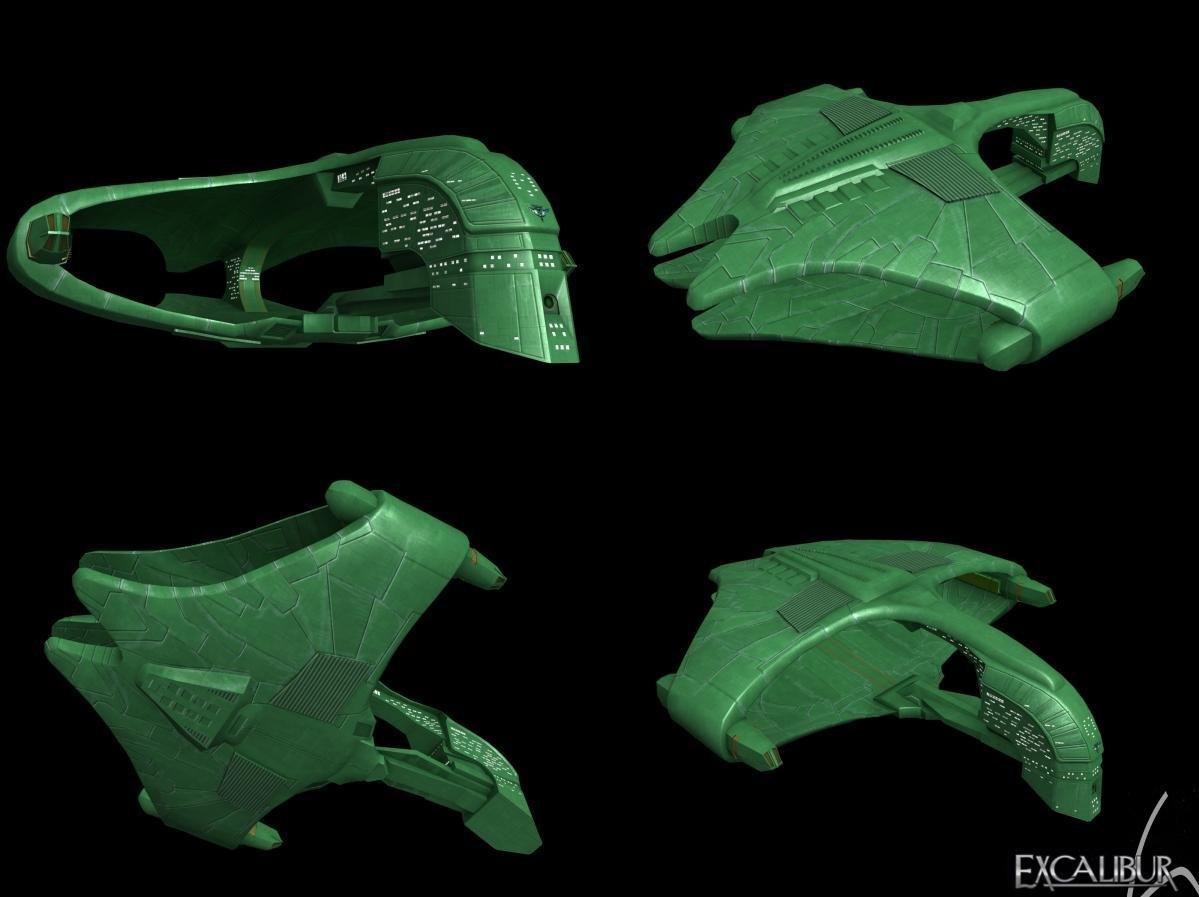
The Romulans left the situation in 2291 with technological and biological samples from both the Taubat and the Metar. This technology would be pored over and reverse-engineered at the secretive Vault facility, deep in Romulan space. Shortly afterwards, the House of G’Iogh approached the Romulan Star Empire in an attempt to ascend to become Emperor of the Klingon Empire. In the event, the ambitions of this House were overthrown by their over-extension. The surviving members of House G’Iogh fled to the Romulan border, only to be assassinated by forces loyal to Gorkon.
The Romulans attempted to manipulate the Federation and Klingon Empires into fighting following the assassination of Gorkon in 2293. This attempt failed with Ambassador Nanclus being recalled in disgrace; he was publicly disintergrated for his crimes. The next attempt was in 2300 and the Kriosian seperatists known as The Thorn were aided in an attempt to disrupt the Empire. Nanclus, actually a Tal Shiar agent, was finally killed along with all the Tal Shiar section chiefs.
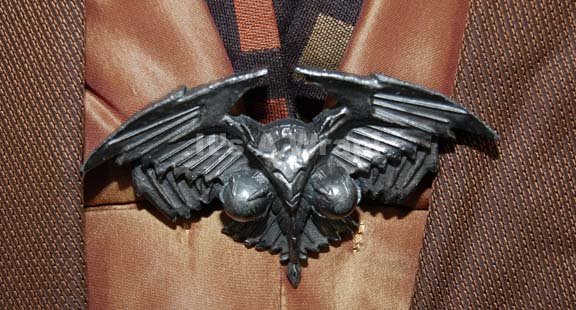 Aventeer Vokar was one of the biggest threats to peace along the Federation border. Outwitted by the USS Hunley and Dakota, Vokar was demoted to sub-lieutenant and only escaped execution from strong senate connections. He would later rebuild his career and achieve flag rank by the early 24th century. It was known from his earlier disgrace that Vokar had a personal grudge against John Harriman. Gell Kamemor from the empire world of Glintara was the Romulan representative to Earth at this time. She had a friendship since 2296 with Captain John Harriman. This friendship would later be exploited in order to set up the Tomed Incident and remove the Romulan threat.
Aventeer Vokar was one of the biggest threats to peace along the Federation border. Outwitted by the USS Hunley and Dakota, Vokar was demoted to sub-lieutenant and only escaped execution from strong senate connections. He would later rebuild his career and achieve flag rank by the early 24th century. It was known from his earlier disgrace that Vokar had a personal grudge against John Harriman. Gell Kamemor from the empire world of Glintara was the Romulan representative to Earth at this time. She had a friendship since 2296 with Captain John Harriman. This friendship would later be exploited in order to set up the Tomed Incident and remove the Romulan threat.
Romulan starship technology was advancing fast with the advent of the Melak A-type Warbird. The prototype vessel was lost whilst using the Shiva Device. A Klingon K’T'inga class battlecruiser had tailed the prototype vessel and provided the first information on the design. Early intelligence suggests the Romulans have abandoned matter/anti-matter energy generation in favour of a forced quantum singularity.
Starfleet Intelligence, concerned at the Romulan advantage could cause a first-strike from that nation, sent undercover operatives into Romulan space in a desperate measure to gain information. Lieutenant Commander Ilani, a Deltan national, was placed as a Tal Shiar captain for a long-duration intelligence-gathering mission. Ilani was placed into the role of a dead Tal Shiar officer with an assigned protection asset, Leena Tamkivi, to watch over and extract her should her cover be blown. Ilani uncovered Tal Shiar atrocities including the systematic annihilation of the population and culture of Tablis’el. Along with the abuse of prisoners whose identities had been erased. Once Ilani had been compromised, her shadow Tamkivi took her on a circuitous route back to the Federation, via Orion and other freighters. Despite taking this information to the Federation President, the information could not be acted upon for fear of exposing the illegal operation within another sovereign nation.
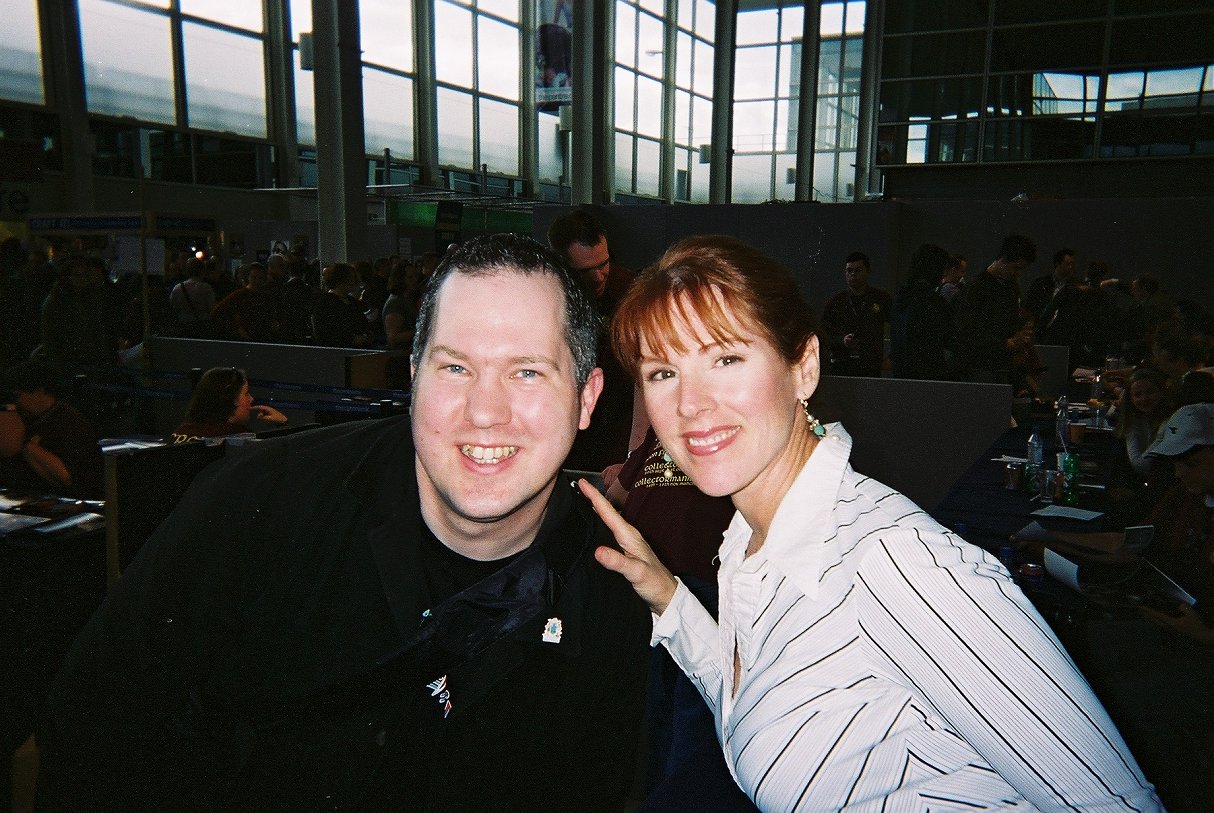
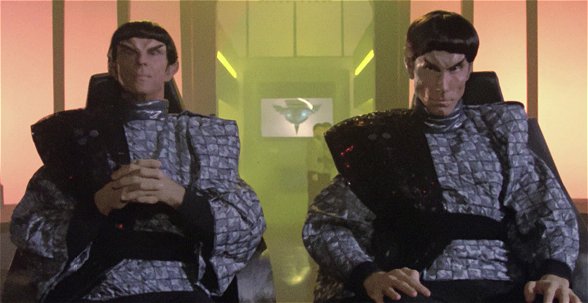 Sectors in the Romulan Star Empire:
Sectors in the Romulan Star Empire:
Tarod Sector - Romulus and Remus
Glintara Sector
Devron Sector
Kaleb Sector
Hyralan Sector
Onias Sector
Kimben Sector
Nequencia Sector
Narendra Sector
Talvath Sector
Vendor Sector
Gacrux Sector
Algorab Sector
Achernar Sector
Khazara Sector
The Nine Pillars of Romulus
1.01 - The Glory of Romulus - Pilot episode that deals with Romulus at its height in the 2290s, prior to the destruction by the explosion of Hobus. An emphasis on the Senate and Praetor.
1.02 - Guilded Cage - The Palatine Palace introduced as the Forbidden City. Introduction of the Emperor and Empress.
1.03 - The Power of Shadows - The Continuing Committee revealed as the true power. Dictating the media and politics.
1.04 - Sword and Shield - The Tal Shiar depicted as the Kempeitai / Stasi / Guoanbu.
1.05 - The Pen is mightier than the Sword - the Department of Education and their propaganda and educational curriculum.











 British Prime Minister Sir Winston Churchill once described Russia as “a riddle wrapped in a mystery inside an enigma.” The same can truly be said of the Romulan Star Empire and its peoples.
British Prime Minister Sir Winston Churchill once described Russia as “a riddle wrapped in a mystery inside an enigma.” The same can truly be said of the Romulan Star Empire and its peoples. 
 Romulans
Romulans
 So the Romulans had and have warp drive. The next point is these exiles from Vulcan needed ships to get to Romulus. Where did these warp-powered colony ships come from and how many would fit on these ships? Thousands, possibly a few million seems a sensible figure, with some lost on the way from going different paths or being lost to Space Perils © (TM)... So a few million Romulans start off their planet colony a few months or years of exploration after exile by Surak. That gives time to grow your Star Empire and have ships ready to fight the Coalition of Planets in 2155 (and sneak Romulan operatives to Vulcan some years before this). Romulan ships armed with nuclear missiles? Again, a 1966 idea which seems silly given NX-01 Enterprise had proto-photon torpedoes and phasers by 2154.
So the Romulans had and have warp drive. The next point is these exiles from Vulcan needed ships to get to Romulus. Where did these warp-powered colony ships come from and how many would fit on these ships? Thousands, possibly a few million seems a sensible figure, with some lost on the way from going different paths or being lost to Space Perils © (TM)... So a few million Romulans start off their planet colony a few months or years of exploration after exile by Surak. That gives time to grow your Star Empire and have ships ready to fight the Coalition of Planets in 2155 (and sneak Romulan operatives to Vulcan some years before this). Romulan ships armed with nuclear missiles? Again, a 1966 idea which seems silly given NX-01 Enterprise had proto-photon torpedoes and phasers by 2154. Over the following millennia or so the Romulans forged their culture and attained their unique look. The small genepool meant that recessive genes found expression, such as the forehead ridge found in ancient proto-Vulcan species. As the Romulans left Vulcan before the philosophies of Surak became the culture, they never realised their psionic abilities. (Author note: although the backstory for Nero shows he did achieve this through drugs and imprisonment. So Romulans DO have the potential).
Over the following millennia or so the Romulans forged their culture and attained their unique look. The small genepool meant that recessive genes found expression, such as the forehead ridge found in ancient proto-Vulcan species. As the Romulans left Vulcan before the philosophies of Surak became the culture, they never realised their psionic abilities. (Author note: although the backstory for Nero shows he did achieve this through drugs and imprisonment. So Romulans DO have the potential).


 Aventeer Vokar was one of the biggest threats to peace along the Federation border. Outwitted by the USS Hunley and Dakota, Vokar was demoted to sub-lieutenant and only escaped execution from strong senate connections. He would later rebuild his career and achieve flag rank by the early 24th century. It was known from his earlier disgrace that Vokar had a personal grudge against John Harriman. Gell Kamemor from the empire world of Glintara was the Romulan representative to Earth at this time. She had a friendship since 2296 with Captain John Harriman. This friendship would later be exploited in order to set up the Tomed Incident and remove the Romulan threat.
Aventeer Vokar was one of the biggest threats to peace along the Federation border. Outwitted by the USS Hunley and Dakota, Vokar was demoted to sub-lieutenant and only escaped execution from strong senate connections. He would later rebuild his career and achieve flag rank by the early 24th century. It was known from his earlier disgrace that Vokar had a personal grudge against John Harriman. Gell Kamemor from the empire world of Glintara was the Romulan representative to Earth at this time. She had a friendship since 2296 with Captain John Harriman. This friendship would later be exploited in order to set up the Tomed Incident and remove the Romulan threat.
 Sectors in the Romulan Star Empire:
Sectors in the Romulan Star Empire:





